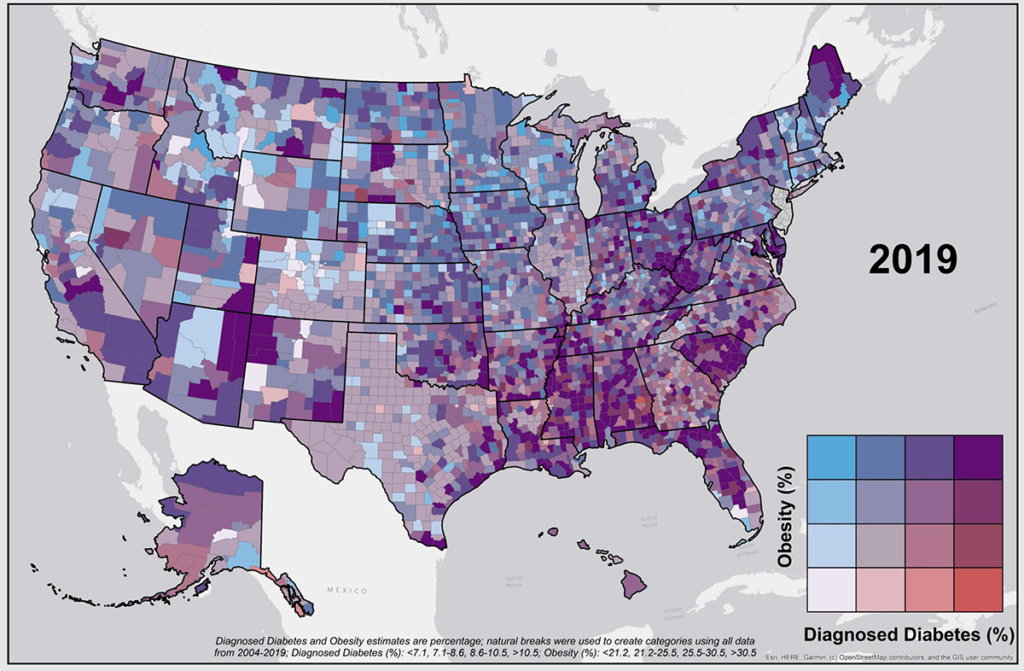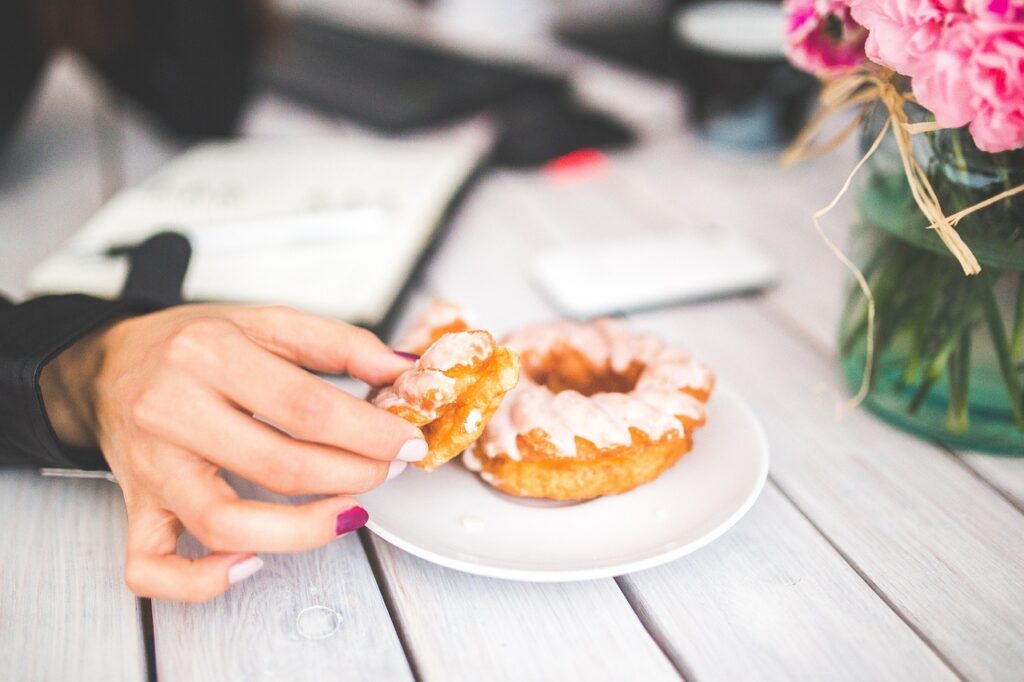With over 34 million people in the United States alone living with diabetes, dietary choices play a critical role in blood sugar control and overall well-being. A well-balanced diet rich in nutrient-dense foods helps stabilize blood sugar levels, reducing the risk of dangerous spikes and crashes.

Choosing the right foods for a diabetic diet is of paramount importance in effectively managing the condition and preventing complications.
Additionally, a healthy diet can contribute to maintaining a healthy weight, as about 90% of individuals with Type 2 diabetes are overweight or obese. By making informed food choices, individuals with diabetes can significantly improve their quality of life and reduce the risk of diabetes-related complications. Diabetes can have serious health consequences if not well managed. High blood sugar levels can damage various organs and systems in the body, including the eyes (leading to diabetic retinopathy), kidneys (leading to diabetic nephropathy), nerves (resulting in diabetic neuropathy), and the cardiovascular system (increasing the risk of heart disease and stroke).
Looking for better guidance on which foods to include in your diabetic diet plan? See the quick summary of different types of diabetes as well as a list of the BEST diabetes superfoods & the WORST foods for diabetes.
Different Types of Diabetes
19 Best Diabetes Superfoods
Diabetic Diet Plan Example
Worst Foods For a Diabetic Diet
8 minute read
Different types of diabetes
Type 1 Diabetes
In this autoimmune condition, the immune system mistakenly attacks and destroys the insulin-producing beta cells in the pancreas. As a result, the body produces little to no insulin. Type 1 diabetes usually develops in childhood or adolescence, and individuals with this form of diabetes require lifelong insulin therapy to manage their blood sugar levels.
Type 2 Diabetes
This is the most common form of diabetes and typically develops in adulthood, although it is increasingly being diagnosed in children and adolescents due to rising obesity rates. In type 2 diabetes, the body either doesn’t produce enough insulin or becomes resistant to its effects. Lifestyle factors, genetics, and obesity are often contributing factors to the development of type 2 diabetes. Management may involve dietary changes, physical activity, oral medications, and sometimes insulin therapy.
Gestational Diabetes
This type of diabetes occurs during pregnancy when the body cannot produce enough insulin to meet the increased demands, leading to elevated blood sugar levels. It typically resolves after childbirth, but women who develop gestational diabetes have an increased risk of developing type 2 diabetes later in life.
Monogenic Diabetes
This is a rare form of diabetes caused by a single gene mutation that affects insulin production or function. It is usually diagnosed in childhood or young adulthood.
Secondary Diabetes
Some medical conditions, medications, or hormonal disorders can lead to elevated blood sugar levels, resulting in secondary diabetes. Treating the underlying cause may help manage blood sugar levels.
19 best diabetes superfoods
A balanced and healthy diet is crucial for managing diabetes and controlling blood sugar levels. The best foods for individuals with diabetes are those that have a minimal impact on blood sugar, provide essential nutrients, and support overall health.
Here’s a list of specific foods that are good for diabetics:
- Leafy Greens
Leafy vegetables like spinach, kale, and Swiss chard are low in carbohydrates and calories while being rich in fiber, vitamins (especially vitamin K), and minerals.
This non-starchy vegetable is high in fiber, vitamins (particularly vitamin C), and minerals. It’s also a source of antioxidants.
- Cauliflower
Low in carbohydrates, cauliflower can be used as a substitute for higher-carb foods like rice or mashed potatoes. It’s also rich in vitamins and minerals.
- Berries
Blueberries, strawberries, and raspberries are low in sugar and high in fiber and antioxidants. They can satisfy sweet cravings without causing rapid blood sugar spikes.
- Oats
Rolled oats or steel-cut oats are whole grains that are high in fiber and have a low glycemic index (GI). They can help stabilize blood sugar levels and provide sustained energy.
- Quinoa
This whole grain is a good source of protein, fiber, and essential nutrients like magnesium and iron. It has a low GI and can be a great addition to meals.
- Legumes
Beans, lentils, and chickpeas are rich in protein, fiber, and complex carbohydrates. They have a low GI and can help control blood sugar levels.
- Fatty Fish
Salmon, mackerel, and sardines are high in omega-3 fatty acids, which have anti-inflammatory properties and support heart health.
- Nuts
Almonds, walnuts, and pistachios are high in healthy fats, protein, and fiber. They can help control hunger and improve insulin sensitivity.
- Greek Yogurt
Low-fat or non-fat Greek yogurt is a good source of protein and calcium with fewer carbohydrates compared to regular yogurt. It can be a nutritious snack or breakfast option.
- Cinnamon
Some studies suggest that cinnamon may help improve insulin sensitivity and lower blood sugar levels.
Cinnamon compounds, such as cinnamaldehyde, have been shown to activate insulin receptors on the surface of cells. This activation can make cells more responsive to insulin, allowing for improved glucose uptake and utilization.
Sprinkle it on oatmeal, yogurt, or smoothies.
- Chia Seeds
These tiny seeds are rich in omega-3 fatty acids. Omega-3s have anti-inflammatory properties and may help improve insulin sensitivity, reducing the risk of insulin resistance and type 2 diabetes complications.
Chia seed are great for diabetic diets and can be added to yogurt, oatmeal, or used to make chia pudding.
- Flaxseeds
Flaxseeds are a good source of fiber, healthy fats, and lignans (antioxidants). These nutrients in combination help slow the absorption of sugar into the blood stream and help reduce inflammation in turn helping improve insulin sensitivity.
They can be ground and added to smoothies, cereal, or baked goods.
- Avocado
Avocado is high in monounsaturated fats, fiber, and various vitamins and minerals. It can be used as a healthy fat source in salads or sandwiches.
- Eggs
Eggs are a good source of protein and essential nutrients. Protein is the macronutrient that keeps you feeling fuller for longer which is important when managing a healthy diet.
Eggs can be part of a balanced meal and help control hunger.
- Tofu
Tofu is a plant-based source of protein that is low in carbohydrates and can be used in a variety of dishes.
- Vinegar
Vinegar, particularly apple cider vinegar, may help improve insulin sensitivity and lower blood sugar levels. It can be used as a salad dressing or diluted in water.
Green tea contains compounds that may improve insulin sensitivity and reduce blood sugar levels. It can be a healthy beverage choice for diabetics.
- Mushrooms
Some varieties of mushrooms, such as shiitake and maitake, may have anti-diabetic properties and can be included in a diabetes-friendly diet.
How to choose foods for your diabetic diet
Generally speaking, you can certainly incorporate many other superfood items into your routine to create a satisfying and effecting diabetic diet plan. It is important to focus on limiting or avoiding foods high in simple carbs (simple carbohydrates, also known as simple sugars, are a type of carbohydrate composed of one or two sugar molecules. They are quickly digested and absorbed by the body, leading to rapid spikes in blood sugar levels).
Adding a variety of nutrient dense foods [based on dietary needs] into a healthy routine is the best strategy for sustainably improving overall health.
Some other non-starchy vegetables for a diabetic diet…
Non-starchy vegetables, such as leafy greens, peppers, and zucchini, are low in carbohydrates and calories while being rich in fiber, vitamins, and minerals. They have a minimal impact on blood sugar and can help with weight management.
Some other whole grains to try…
Whole grains like brown rice and whole wheat products contain complex carbohydrates and fiber, which are digested more slowly, leading to steadier blood sugar levels. They also provide important nutrients like B vitamins and minerals.
Lean proteins that are great for a diabetic diet…
Lean protein sources like poultry, fish, and lean cuts of meat are essential for maintaining muscle mass and providing satiety. They have little to no effect on blood sugar and can help balance meals.
Healthy fats to help combat inflammation…
Avocado, olive oil, and nuts contain healthy monounsaturated fats that can help improve insulin sensitivity and reduce the risk of heart disease.
Diabetic Diet Plan Example [1 day]:
Breakfast:
- Scrambled Eggs with Spinach and Tomatoes: Cook two eggs with a handful of fresh spinach and diced tomatoes in a non-stick pan. Season with herbs and spices like basil or oregano for flavor.
- Whole-Grain Toast: Enjoy one slice of whole-grain toast with a thin spread of almond butter or peanut butter (unsweetened).
- Fresh Berries: A small serving of mixed berries (e.g., strawberries, blueberries, raspberries) for added fiber and antioxidants.
- Herbal Tea or Black Coffee (unsweetened) with a splash of low-fat milk (if desired).
Mid-Morning Snack:
- Greek Yogurt: A small serving of plain, low-fat Greek yogurt topped with a few crushed almonds or walnuts for added texture and healthy fats.
Lunch:
- Grilled Chicken Salad: A generous portion of grilled chicken breast sliced over a bed of mixed greens (e.g., lettuce, spinach, arugula).
- Veggies: Add non-starchy vegetables like cucumbers, bell peppers, and cherry tomatoes to the salad.
- Olive Oil and Vinegar Dressing: Drizzle with a vinaigrette made from olive oil, balsamic vinegar, and a touch of Dijon mustard.
- Quinoa: A side of cooked quinoa for added fiber and protein.
Afternoon Snack:
- Carrot Sticks and Hummus: Enjoy carrot sticks with a small serving of hummus for a satisfying and crunchy snack.
Dinner:
- Baked Salmon: A serving of baked salmon seasoned with herbs and a squeeze of lemon for flavor.
- Roasted Vegetables: Roast a mix of colorful vegetables like broccoli, cauliflower, and bell peppers with olive oil and your favorite seasonings.
- Quinoa or Brown Rice: Choose one as a side to complete the meal.
Evening Snack (if needed):
- Cottage Cheese: A small serving of low-fat cottage cheese with a sprinkle of cinnamon or a few fresh berries.
Fluids:
- Water: Stay well-hydrated throughout the day by drinking plenty of water.
- Herbal Tea: Enjoy unsweetened herbal teas as desired.
*Remember that individual dietary requirements may vary, and it’s important to work with a professional to create a personalized meal plan that meets your specific needs and preferences while effectively managing diabetes.
And the WORST foods for a diabetic diet…
The worst foods for individuals with diabetes are typically those that can cause rapid spikes in blood sugar levels, contribute to insulin resistance, and increase the risk of complications associated with diabetes.

Here are some of the worst foods for diabetics and why they should be limited or avoided:
Sugary Beverages
Soda, fruit juices, energy drinks, and sweetened teas are high in added sugars and can cause significant blood sugar spikes. They provide empty calories and little nutritional value.
Candy and Sweets
Candy, chocolates, and other sugary treats are primarily composed of simple sugars that can quickly raise blood sugar levels without providing essential nutrients. They can also lead to weight gain when consumed in excess.
Processed Snack Foods
Highly processed snacks like potato chips, pretzels, and snack cakes are often loaded with unhealthy fats, refined carbohydrates, and added sugars. They offer little satiety and can lead to overeating causing excessive carbohydrate intake leading to higher blood sugar levels.
White Bread and Refined Grains
Foods made with white flour, such as white bread, bagels, and pastries, have a high glycemic index (GI) and can cause rapid blood sugar spikes. They lack the fiber and nutrients found in whole grains.
Fried Foods
Deep-fried foods like french fries, fried chicken, and doughnuts are high in unhealthy trans fats and saturated fats. These unhealthy fats can promote inflammation in the body. Chronic inflammation is associated with insulin resistance and is considered a risk factor for type 2 diabetes.
Processed Meats
As with deep fried foods, processed meats like bacon, sausages, and deli meats are often high in unhealthy fats leading to inflammation insulin resistance. Additionally, they are loaded with sodium. Excessive sodium intake can lead to high blood pressure, which is a risk factor for heart disease and kidney problems, both of which can be exacerbated by diabetes.
They may also contain preservatives that can be harmful when consumed regularly.
Sweetened Breakfast Cereals
Many breakfast cereals are loaded with added sugars, even those marketed as “healthy.” These cereals can lead to blood sugar spikes and provide little long-lasting energy.
Fast Food
Fast food items like burgers, fries, and milkshakes are typically high in unhealthy fats, sugars, and sodium. They are often calorie-dense and lack essential nutrients.
High-Sugar Condiments
Ketchup, barbecue sauce, and other condiments can be surprisingly high in added sugars. These sugars can add up quickly when used liberally.
Alcohol
Excessive alcohol consumption can lead to unstable blood sugar levels, especially if consumed on an empty stomach. It can also interfere with the liver’s ability to regulate blood sugar.
Full-Fat Dairy with Added Sugars
Some full-fat dairy products, like flavored yogurts and sweetened condensed milk, can be high in added sugars. Opt for plain, low-fat, or non-fat dairy options.
Processed and Sugary Breakfast Pastries
Pastries like doughnuts, muffins, and sweet rolls are typically high in sugar, unhealthy fats, and refined grains. They offer little nutritional value and can lead to blood sugar spikes.
Conclusion
Overall, it is important to fuel your body in the most ideal way for whatever health conditions or goals you need to support if you want to live healthily.
Adjusting your dietary routine & having to begin a diabetic diet isn’t anything to stress out about; by choosing nutrient-dense foods including complex carbohydrates you can enjoy a balanced diet without feeling deprived.
It’s important to limit or avoid processed foods, added sugars, trans & saturated fats, refined carbs & excessive amounts of sodium for any individual, and especially those with diabetes, looking to achieve optimal health.
Knowing how to navigate the right diet routine can be especially intimidating when you suffer from 1 or more health conditions. If you’re looking for a more specific list of best foods for diabetic weight loss or general wellness, Weight Loss Direct’s AI technology will generate your perfect nutrition plan for your specific weight loss goals.

